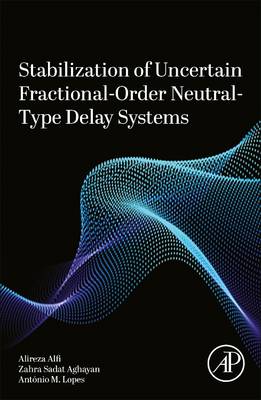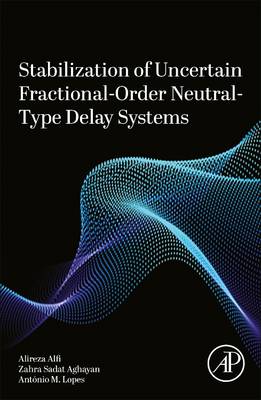
Je cadeautjes zeker op tijd in huis hebben voor de feestdagen? Kom langs in onze winkels en vind het perfecte geschenk!
- Afhalen na 1 uur in een winkel met voorraad
- Gratis thuislevering in België vanaf € 30
- Ruim aanbod met 7 miljoen producten
Je cadeautjes zeker op tijd in huis hebben voor de feestdagen? Kom langs in onze winkels en vind het perfecte geschenk!
- Afhalen na 1 uur in een winkel met voorraad
- Gratis thuislevering in België vanaf € 30
- Ruim aanbod met 7 miljoen producten
Zoeken
Stabilization of Uncertain Fractional-Order Neutral-Type Delay Systems
Alireza Alfi, Zahra Sadat Aghayan, António M Lopes
Paperback | Engels
€ 288,45
+ 576 punten
Omschrijving
Stabilization of Uncertain Fractional-Order Neutral-Type Delay Systems presents an in-depth exploration of the challenges faced in stabilizing fractional-order systems with uncertainties, particularly those involving neutral-type delays. The book opens with a thorough introduction before advancing from constant fractional-order neutral-type systems (CFONT) to variable fractional-order counterparts (VFONT). Addressing real-world issues such as control input saturation and actuator delay, the book discusses both non-optimal and sub-optimal control approaches, including guaranteed cost controllers (GCC). It delves into output-feedback control as a viable alternative and compares static and dynamic feedback controllers, noting that dynamic controllers can enhance transient response but introduce additional complexity. These methods ensure closed-loop system stability and performance by providing clear stabilization conditions expressed as linear matrix inequalities (LMIs), which can be efficiently solved using tools like MATLAB's LMI toolbox or freely available software such as SEDUMI and YALMIP. Beyond theory, the book examines state- and output-feedback controller structures, acknowledging the practical limitations of accessing all system states.
Specificaties
Betrokkenen
- Auteur(s):
- Uitgeverij:
Inhoud
- Aantal bladzijden:
- 308
- Taal:
- Engels
Eigenschappen
- Productcode (EAN):
- 9780443340239
- Verschijningsdatum:
- 1/12/2025
- Uitvoering:
- Paperback
- Formaat:
- Trade paperback (VS)
- Afmetingen:
- 152 mm x 229 mm

Alleen bij Standaard Boekhandel
+ 576 punten op je klantenkaart van Standaard Boekhandel
Beoordelingen
We publiceren alleen reviews die voldoen aan de voorwaarden voor reviews. Bekijk onze voorwaarden voor reviews.









